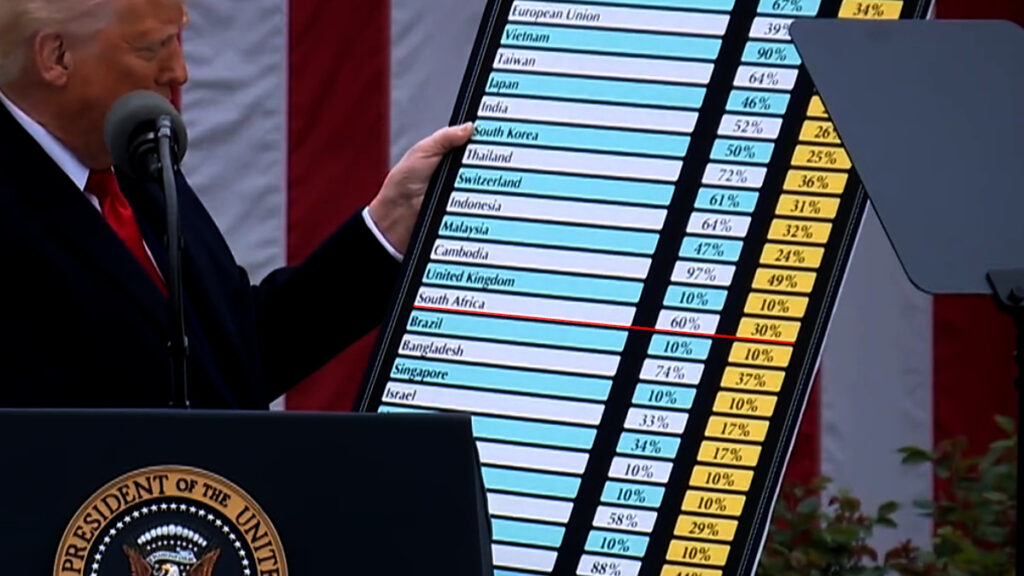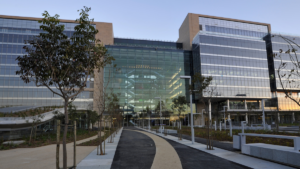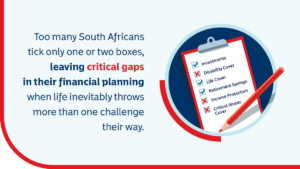Dark clouds gather for South Africa

Trade conditions in South Africa deteriorated noticeably in May and June 2025 after a brief positive turn in March and April, and prospects moving forward are bleak.
The latest Trade Conditions Survey from the South African Chamber of Commerce and Industry (SACCI) shows that global trade uncertainty is driving tensions, which spells bad news for the months ahead.
Results for May and June 2025 retracted into negative territory from an improved positive position in March and April 2025.
During the first six months of 2025, trade conditions started off relatively weak, improved into positive territory, and then again ended weaker as respondents digested the constantly changing trade environment.
Whereas 56% of respondents experienced positive conditions in March, the trade climate gradually weakened, with 46% positive about their trade experience in May and June.
However, despite June’s weakness, 51% of the respondents indicated that trade conditions in 2025 were better than in June 2024.
On top of declining conditions at present, survey participants are less hopeful of improvements in the months ahead.
Compared to 69% of participants in May expecting trade conditions to improve over the next six months, only 62% were positive about the next six months in June.
“The disappointing economic performance at present, and a globally uncertain economic and trade environment, contributed to a less favourable trade outlook,” SACCI said.
“It therefore remains inevitable that the actions taken to enhance the local economic performance must be continued and enhanced.”
Despite the declining picture for trade, households and consumers have been getting some relief.
Consumer inflation stayed low at 2.8% in May 2025, and producer inflation was measured at 0.1%. This should provide some comfort to households and producers in terms of pricing.
Following months of fuel price cuts, July saw prices increase. However, SACCI noted that this could have been much higher if the rand had not strengthened against the US dollar by about 1.5% in June.
As it stands, petrol prices are lining up for a cut in August, though diesel users will likely not be as lucky.
The South African Reserve Bank (SARB) also cut interest rates at the end of May, delivering a cumulative 100 basis point cut since September 2024.
Economists, analysts, and the Reserve Bank itself see room for further cuts, though recent developments have muddied these expectations.
Notably, SACCI pointed to rising municipal tariffs and property taxes that kicked in from July as potentially distorting inflationary expectations.
This could disturb the prospects for lower interest rates. Meanwhile, real interest rates remain at an uncomfortably high level, it said.
Difficult months ahead

The forward-looking distortions mainly emanate from global trade conditions and the looming 30% tariffs on South Africa.
US President Donald Trump announced this week that the tariffs would be implemented on 1 August 2025, if the South African government fails to negotiate a better deal.
Because of this, SACCI noted that the trade outlook for the next six months has deteriorated, with expected lower sales volumes, fewer new orders, and decreasing supplier deliveries.
Whereas 75% of the respondents were optimistic about the trade outlook in December 2024, 65% had a positive six-month outlook in June 2025.
“The downward drift of expectations is in accordance with uncertainty and an anticipated limited performance by the local economy,” it said.
While there have been positive readings on trade data, such as new vehicle sales, retail sales and tourism being up year on year, export trades are much lower.
“Uncertainty of global trade prospects may become exceedingly perplexing in the near future,” SACCI said.
“Global trade relations will be critical to trade conditions for South Africa due to its open economy and its inward linkages.”
Another positive is that, despite trade conditions showing “sensitivity”, respondents said they do not anticipate any drastic adjustments to employment, now or in the next six months.
However, this is little consolation in a market where unemployment is at 32.9%, and the impending tariffs threaten various sectors and industries.
Key industries likely to be hit by the tariffs, such as the automotive and agricultural sectors, employ hundreds of thousands of workers, with tens of thousands of those jobs on the line.




















